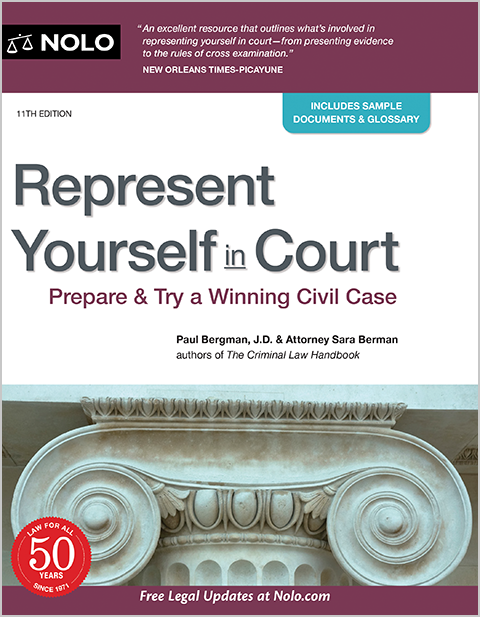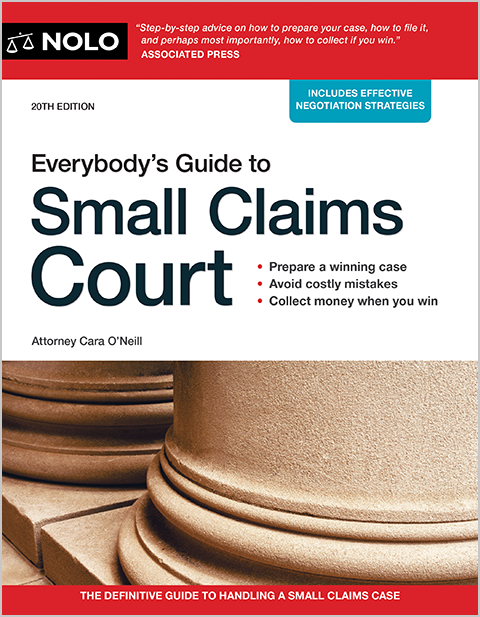You got a Texas money judgment. Now it's time to collect. We explain how to record Texas judgment liens, collect on a lien, extend your judgment, and more.
You went to court and got a judgment that says you're entitled to money from the party you sued, now called a "judgment debtor." What comes next? How can you—the judgment creditor—collect the money you're due? That's the focus of this article.
One way to collect is by putting judgment liens on the judgment debtor's Texas property. After a quick review of how judgment liens differ from judgments, we'll turn our attention to the specifics of Texas law. In particular, we cover:
- the kinds of property subject to Texas judgment liens
- how you put judgment liens on Texas property
- how long your judgment lien lasts and how you can extend it, and
- the ways you can turn your judgment lien into money.
If you want some background information, here's more about how court judgments are collected.
What's the Difference Between a Judgment and a Judgment Lien?
A judgment is a court order that says a judgment creditor is legally entitled to a sum of money from a judgment debtor. But a judgment, standing alone, isn't self-enforcing. That is, you can't take a judgment to your county sheriff's office and demand that the judgment debtor's real estate be sold to pay you.
If you want to seize and sell the judgment debtor's property, you first have to attach your judgment to specific items of property. That's what a judgment lien does. As we'll see below, once you take the correct steps to record an abstract of your Texas judgment, it becomes a lien against the judgment debtor's property. At that point, you can look for ways to turn your judgment into cold, hard cash.
Kinds of Property Subject to Texas Judgment Liens
In Texas, you can attach judgment liens only to real estate, meaning land, buildings, and other improvements. When you properly record a Texas judgment abstract (see below), the lien attaches to real estate the judgment debtor:
- presently owns, and
- acquires later, as long as your judgment lien is still good.
No Liens on Personal Property
You can't put judgment liens on Texas personal property—cars, artwork, antiques, electronics, household furnishings, and the like. But that doesn't mean a judgment debtor always gets to keep their autos, boats, and other big ticket items. Even without judgment liens, there's a way to have the sheriff seize personal property.
If you're considering this step, speak to a Texas collection lawyer first. They can tell you whether it's worth your time and expense to go after the judgment debtor's personal property—and there's a good chance it won't be. If it's likely to be worthwhile, they'll guide you through the process.
Texas Exemptions
Like all states, Texas exempts some property—both real and personal—from the reach of creditors. A few examples include:
- a homestead, consisting of 10 acres (within a municipality) or 100 or 200 acres (for an individual or a family, respectively, in a rural area), along with improvements like a house
- tax exempt pension or retirement plans or individual retirement accounts (IRAs), and
- personal property—such as home furnishings, motor vehicles, wearing apparel, books, equipment, and tools of a trade, business, or occupation, and certain animals—all with an aggregate value of up to $100,000 for a family or $50,000 for an individual.
How to Attach Judgment Liens to Real Estate
A Texas state or federal court judgment becomes a judgment lien on the judgment debtor's nonexempt real estate in the county when the county clerk records an abstract (summary) of the judgment in the county property records.
How Long Does a Judgment Lien Last?
A judgment lien remains in force for up to 10 years from the date the abstract was recorded. Note, importantly, that if a judgment goes dormant (see below), any judgment lien based upon that judgment is extinguished. You can revive a dormant judgment, but then you'll have to get new judgment liens.
A judgment lien can be extended as described below.
The Judgment Abstract
You get a judgment abstract from the clerk of the court that issued the judgment. The abstract must contain all information required by Texas law. You'll need one abstract for each county where you want to record a judgment lien.
How Long Does Your Texas Judgment Last?
A Texas judgment lasts for 10 years from the date it's entered by the court. You can extend the life of your judgment by:
- taking steps to execute (collect) on it, or
- timely reviving it (see below).
Execute to Avoid Dormancy
If you get a judgment and do nothing with it for 10 years, it goes dormant. Once a judgment goes dormant, you can't take any steps to collect on it unless you first revive it. Think of it as a "zombie" judgment: It's not quite dead, but it isn't exactly alive, either. The good news is that it's easy to keep your judgment from turning into a zombie.
Simply ask the clerk of the court that entered the judgment to issue a writ of execution, then serve the writ on the judgment debtor. This process automatically restarts the 10-year clock. In other words, it prevents your judgment from going dormant. You can extend your judgment indefinitely this way.
Reviving a Dormant Judgment
If your judgment goes dormant, you have a two-year window to revive it. Specifically, from the date it goes dormant, you have two years to file a motion with the court that entered the judgment, asking the court to revive it. But you have to be diligent. It's not enough just to ask the court to revive it—you must follow up and make sure the judgment is timely revived.
If your judgment isn't revived by the end of the two-year period, it's dead. There's almost no way to bring it back to life. Unless you can prove that the judgment debtor fraudulently hid assets—and that's a steep hill to climb—you've lost the ability to collect the amount you're owed.
Be Sure to Extend Your Judgment Liens
Extending a judgment by taking steps to execute on it doesn't automatically extend your judgment liens. To keep your liens alive, you must re-record an abstract of the judgment with the county clerk's office in each county, before the judgment lien's 10-year term expires.
Remember, too, that when a judgment goes dormant, that's the end of any judgment liens that depended on it. If you timely revive the judgment, you'll have to record abstracts of the revived judgment in order to get new judgment liens.
How Do You Turn a Texas Judgment Lien Into Money?
In general, there are three ways you can try to collect on an Texas judgment lien:
- negotiate a settlement
- wait for the judgment debtor to sell or refinance the property, and
- execute on your lien.
Negotiate a Settlement
If you want payment sooner rather than later, this is likely your best choice. No, you won't get all the money you're entitled to, but that's the nature of a settlement. You'll collect faster—and more inexpensively—than via the other two options.
Wait for the Judgment Debtor to Sell or Refinance
Most often, a buyer or lender will insist on clear title, free of all judgment liens. So, to sell or refinance, the judgment debtor will have to approach you to make a deal. Only now, you've got more negotiating leverage. As long as you're willing to sit tight and wait, this too is a low-cost, low-stress way to collect.
Execute on Your Lien
Executing on your lien means having the sheriff sell the judgment debtor's property at auction. This might seem like a tempting option. But before you head down this path, check with a local attorney to find out about the legwork and costs involved. In addition, see who's ahead of you in payment priority, or you might discover—too late—that the sale proceeds aren't enough to pay you in full (or at all).
Lastly, be aware that this step might be just the push the judgment debtor needs to declare bankruptcy. Should that happen, you're likely to be standing in a long, very unhappy line of creditors with little chance of getting paid.
Next Steps
Want to have a look at Texas's judgment lien laws? You'll find most of them in Tex. Prop. Code, tit. 5, subtit. B, ch. 52 (2025).
We've covered the basics, but of course, the devil's in the details. After reviewing the Texas statutes, you might decide that your best option is to get help collecting your judgment. An experienced Texas creditor's rights or collection attorney can answer your questions and help you chart a collection path that gives you the best chance to maximize your recovery.



